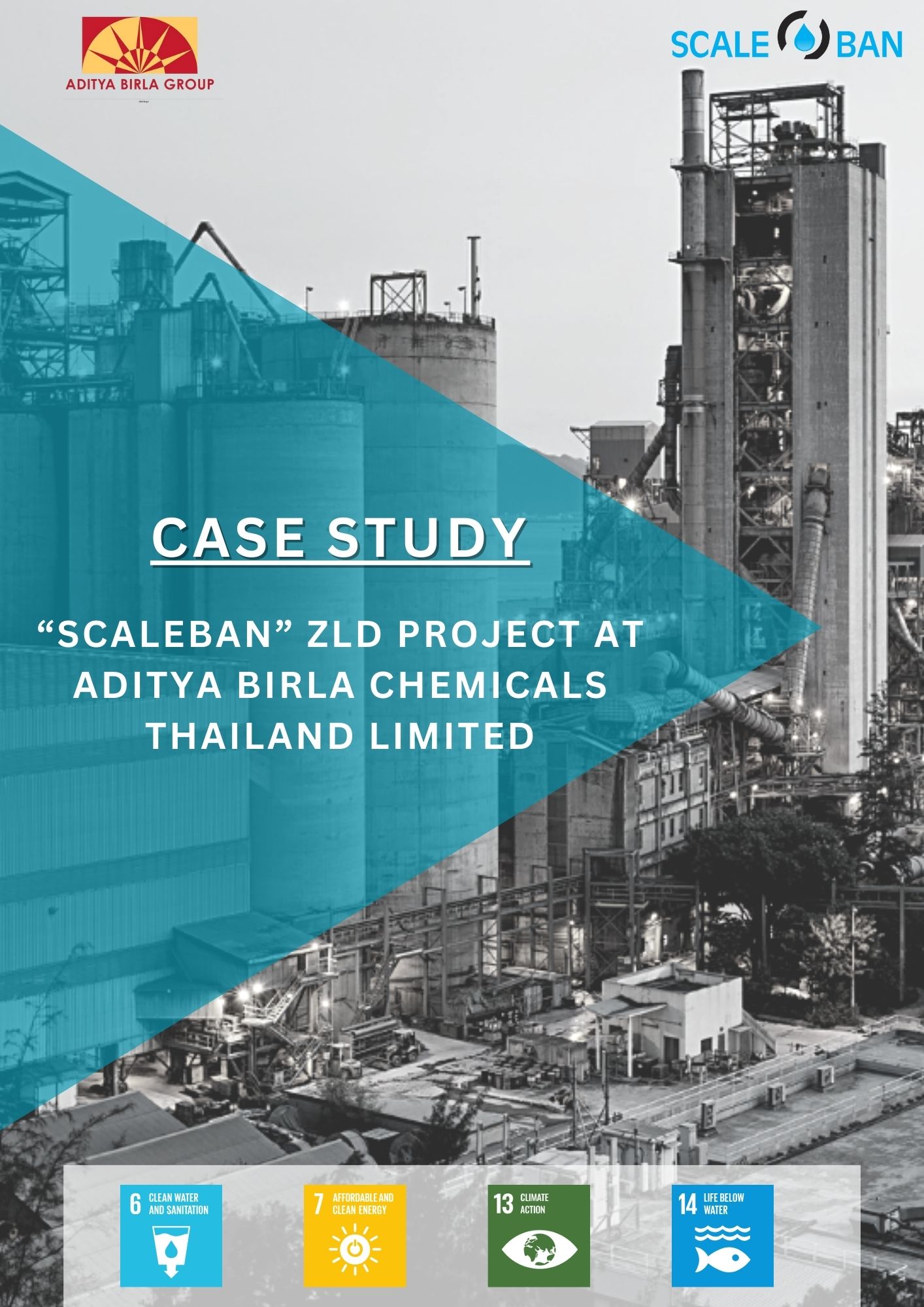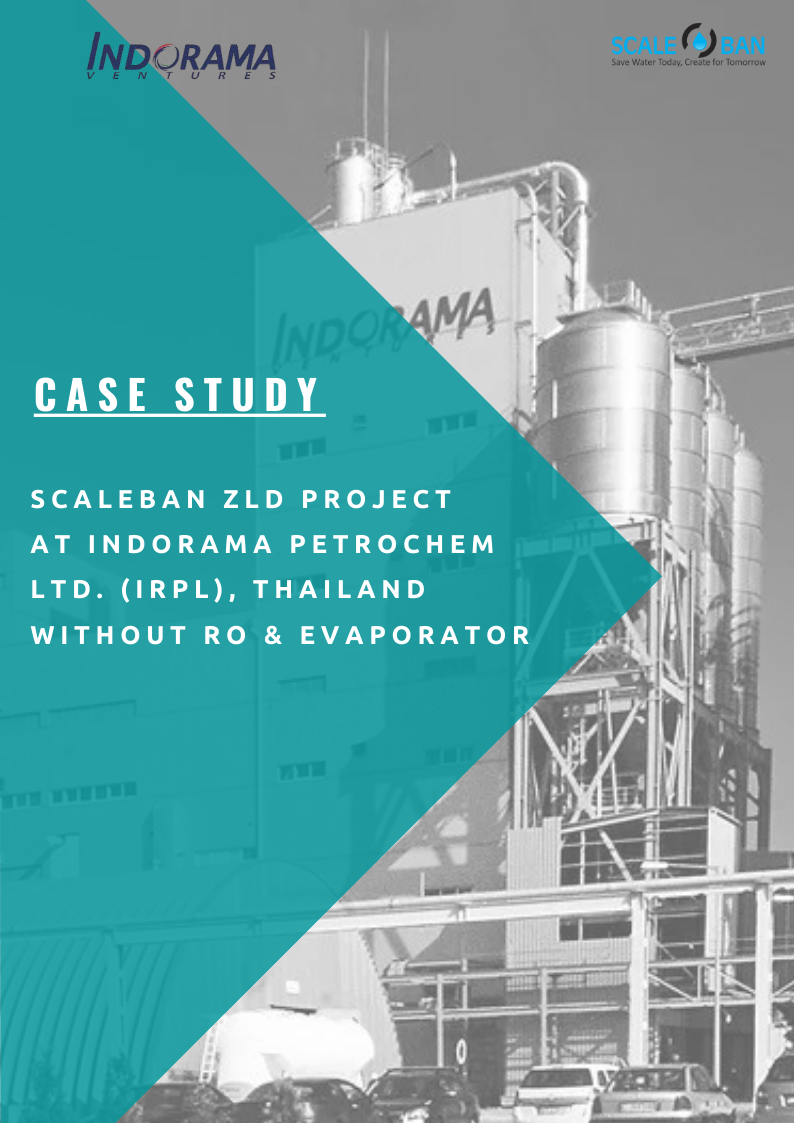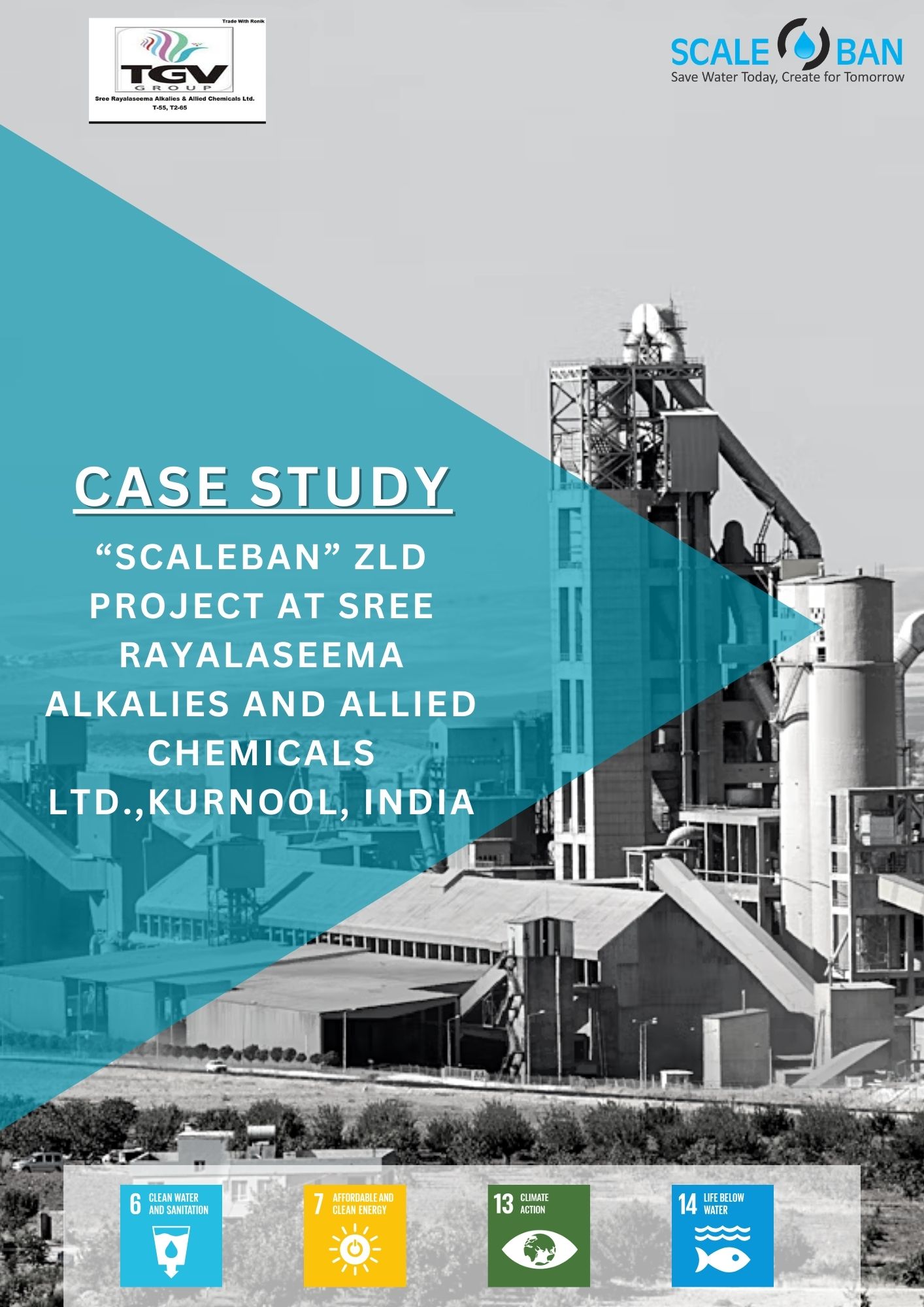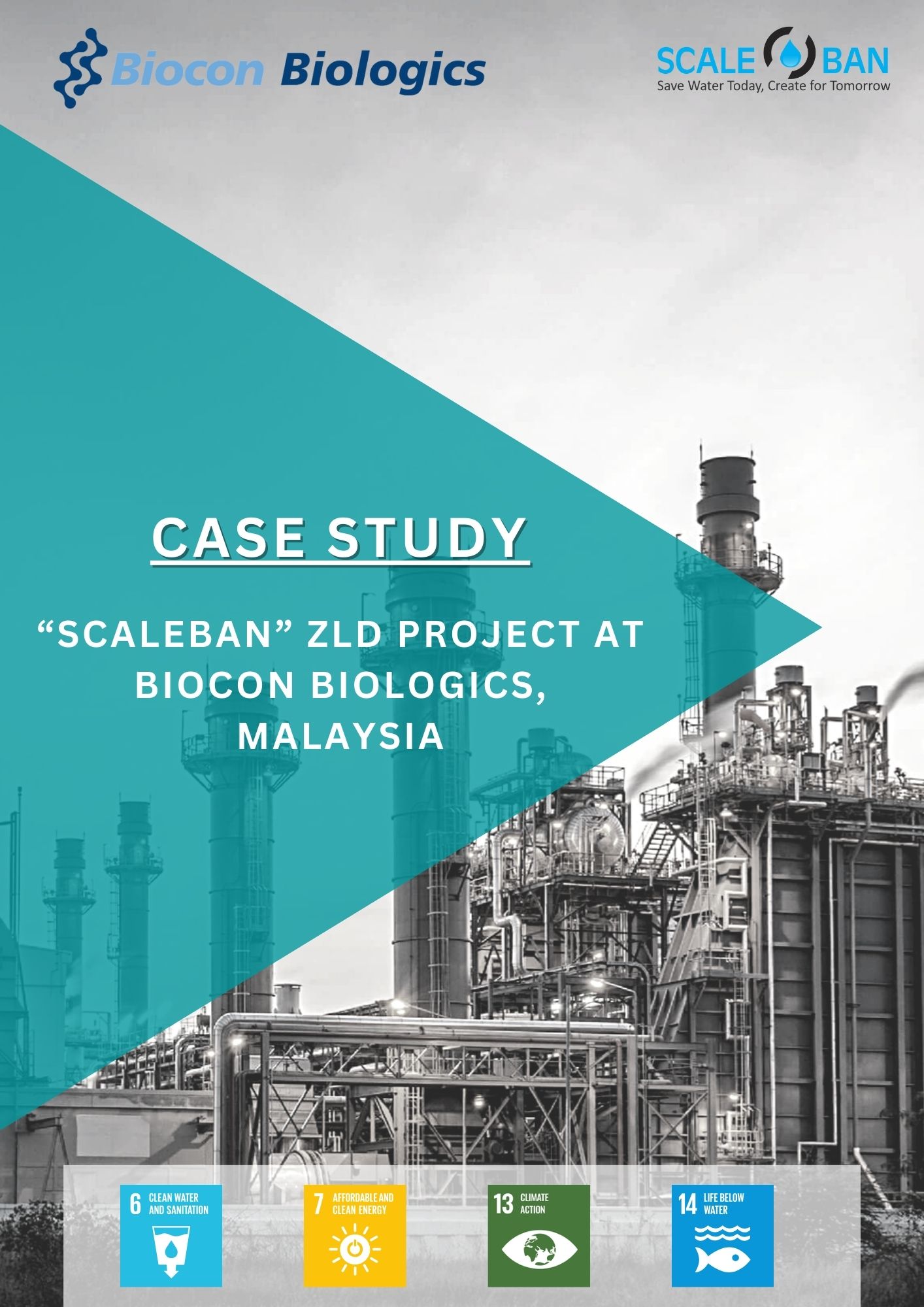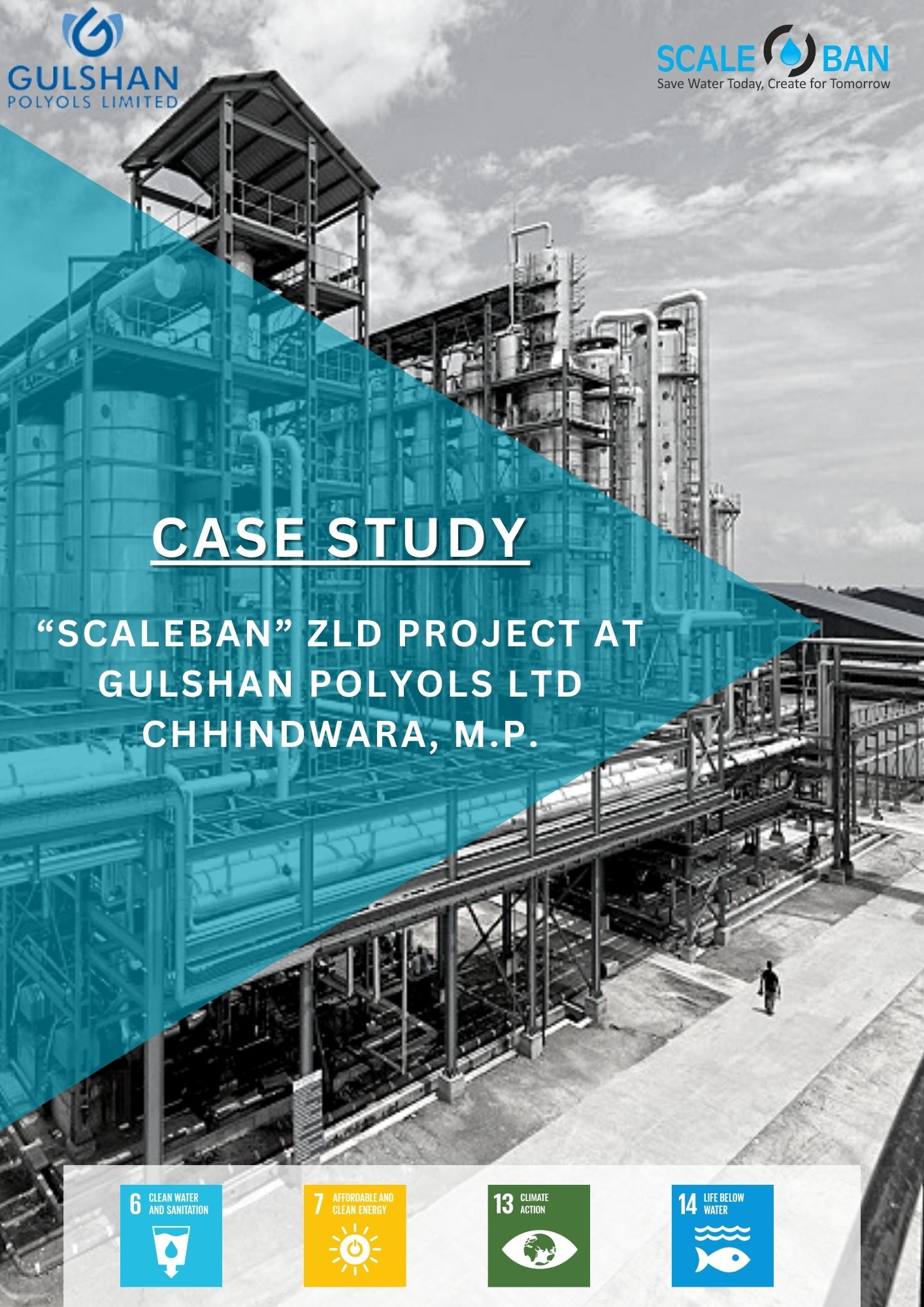“SCALEBAN” – A solution technology for achieving water conservation & ZLD objectives on a sustainable basis
Looking at the present serious concern of water conservation and environment protection, industries has to reduce, recycle and reuse their plant wastewater, but available conventional wastewater technologies require very high CAPEX/ OPEX, besides their operational difficulties. whereas, “SCALEBAN” technology gives freedom for the direct utilization of wastewater in the cooling towers in place of fresh water to optimize water conservation & ZLD objectives on a sustainable basis.
“SCALEBAN” solution is a combination of “SCALEBAN” equipment, “SCALEBAN” specialty chemicals and “SCALEBAN” Filtration system, by which wastewater can be successfully utilized in the cooling towers in place of fresh water and can be operated at very high COC (15-20), with very high TDS up to 300,000 ppm i.e. 30% without affecting the plant performance by ensuring scaling, corrosion and bio-fouling free operations of condenser/ heat exchangers including entire cooling tower circuit. This will eliminate/minimize the use of costly conventional wastewater treatment technologies .

our Objective
Our objective is to protect environment and mother Earth by conserving precious natural resources i.e. WATER & ENERGY on a sustainable basis.
With our unique technology “SCALEBAN”, we will not only continue to achieve water conservation across industrial spectrum but also reduce CO2 emission across the GLOBE.
SCALEBAN works on the theme, “CONSERVE….. PRESERVE….. SERVE”
globally available Conventional Technologies For the treatment of wastewater
EXORBITANT SOLUTION TO INDUSTRIES FOR OPTIMIZING WATER CONSERVATION & ZLD OBJECTIVES
- Biological ETP
- Reverse osmosis plant (RO)
- Multiple Effect Evaporators (MEE)
- Agitated thin film dryer (ATFD)

How ZLD Systems Revolutionize Water Treatment
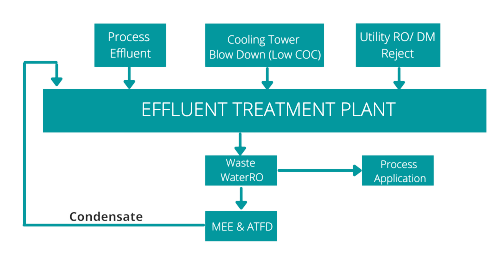
LIMITATIONS WITH CONVENTIONAL TECHNOLOGIES
Substantial CAPEX and OPEX involved.
High energy consumption leading to high CO2 emission.
Performance depends on designed wastewater parameters.
Operational challenges on a daily basis due to variation in wastewater parameters.
Sizeable space required for installation.
Longer installation & commissioning time (minimum 24 months)
Large footprint required.
SCALEBAN TECHNOLOGY at a glance
SCALEBAN technology is a combination of SCLAEBAN equipment, SCALEBAN Speciality Chemicals & Filtration system by which wastewater can be successfully utilized in the cooling towers at very high TDS (30%) and COC (15-20) by insuring zero scale, corrosion and bio- fouling free operation of the entire cooling tower circuit.
This will also eliminate the need of fresh water in the cooling towers, also due to high COC operation, there will be a reduction in cooling tower blowndown by 90% which will also reduce cooling tower fresh water demand substantially.
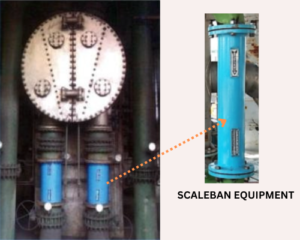
"A Sustainable Technology for optimizing water conservation & zero liquid discharge"
SCALEBAN WATER CONSERVATION / ZLD SCHEME

SCALEBAN solution addresses common problems associated with use of wastewater in the cooling tower in the following manner
- Hard Water Scaling– Scaleban equipment will be installed just at the inlet of every heat exchanger in the cooling water line which will prevent scaling in the heat exchangers even at very high hardness available in the cooling tower circulation water.
- Corrosion – Scaleban speciality chemicals (Corrosion inhibitors) are suitably designed to control corrosion on the different metallurgy in the cooling tower circuit, even at very high TDS, chlorides, sulphates in the cooling tower circulation water.
- Bio-fouling – SCALEBAN Speciality chemicals (Biosites) are suitably designed to control biofouling in the cooling tower circuit even with the use of wastewater having COD BOD.
- TSS Removal – Scaleban Filtration system having glass media is used for effective filtration.
SCALEBAN technology has following advantages when compared with available conventional technologies for achieving water conservation/ ZLD objectives globally
- Achieving water conservation & ZLD objectives on a sustainable basis.
- 80% savings in CAPEX.
- 80% savings in OPEX.
- NO energy required to operate.
- Reduction in CO2 emission.
- Zero Footprint – Being an online equipment.
- Quick ROI (within 12-18 months).
- Fastest implementation (6-8 weeks).
- Zero maintenance/replacement for 20 years.
- Very easy to implement & operate
- By implementing Scaleban, industries contribute in achieving UN Sustainable Development Goal nos.6,7,13&14
SCALEBAN Working
Solubility characteristics of SALT IN water
To understand the working process of Scaleban, let us first understand the solubility characteristics of Calcium & Magnesium in water. For better understanding of this subject, let us take an example of solubility of sugar & common salt in water. We all know that sugar and common salt dissolve in water and the rate of their solubility increases with the increase in temperature. With this, we can establish that the solubility of sugar & common salt in water increases with the rise in temperature.
However, in case of Calcium & Magnesium salts the solubility shows a reverse nature with respect to temperature & pH therefore the solubility of Calcium & Magnesium in water decreases with the increase in temperature or pH of water. The relationship can be seen from the graph – 1 & 2
IMPACT OF TEMPERATURE & pH ON SOLUBILITY OF Ca++ & Mg++
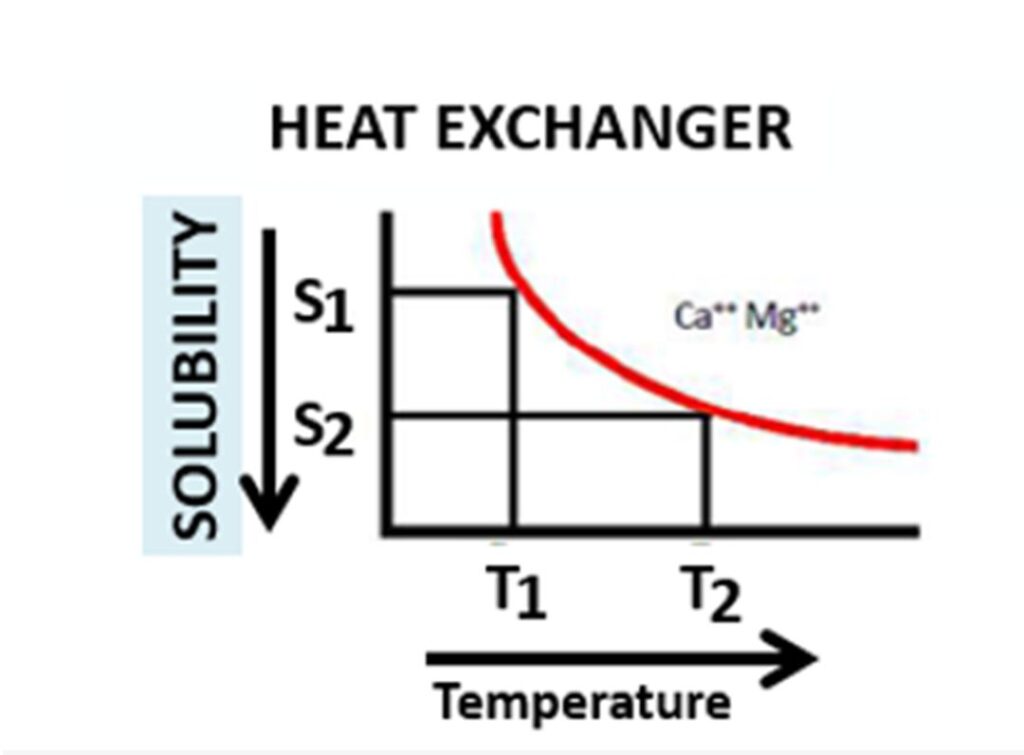
Graph – 1: Relationship between Temperature and Solubility of Ca++ & Mg++ salts in water
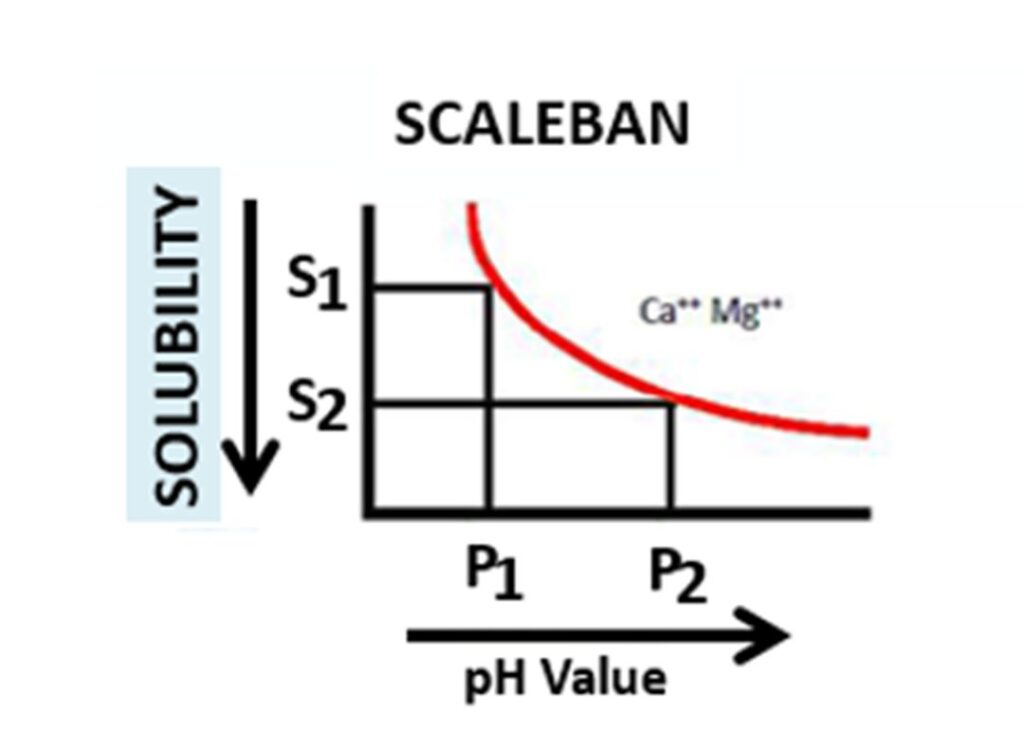
Graph – 2: Relationship between pH and Solubility of Ca++ & Mg++ salts in water
Graph – 1: ‘Solubility of Ca++ & Mg++ v/s Temperature’
As it is known, the main cause responsible for formation of scale inside any heat exchanger is the rise in temperature of water flowing through it since at higher temperature; calcium and magnesium has a tendency to precipitate. A graphical representation of solubility of these salts in water with relation to temperature indicates that with the rise in temperature of water from T1 to T2 the solubility of these salts reduces from S1 to S2 and start precipitation/scaling in the heat exchanger.
Graph – 2: ‘Solubility of Ca++ & Mg++ v/s pH’
It is also known that the solubility of Calcium & Magnesium in water decreases with the increase in pH of water. This can be seen from the second graph. Similar to its tendency to precipitate out dissolved Calcium and Magnesium salts at higher temperature.
SCALEBAN WORKS ON GALVANIC PRINCIPLE

GALVANIC PRINCIPLE
SCALEBAN is an online pipe shaped mechanical device which houses very specially designed core that is sintered with number of electronegative elements in their increasing order of electro-negativity in the direction of water flow. SCALEBAN Equipment should be installed in the inlet cooling water line and close to each heat exchanger in the cooling tower circuit. When water passes through SCALEBAN, it acts as an electrolyte (Being a self electrolyte by nature) while it comes in contact with the core placed inside SCALEBAN.

Due to galvanic action, the core gets negatively charged and attracts the lightest ions present in the fluid i.e. Hydrogen ions (H+) towards itself. The relationship between pH of water and H+ ion is expressed by the formula pH ∝ 1/H+. As pH is inversely proportional to H+ ions concentration; the concentration of H+ ions becoming comparatively less in the fluid inside the “SCALEBAN” equipment, pH value increases and precipitates Calcium and Magnesium salts in very fine particles having colloidal nature before it comes in contact with heat transfer surfaces. Once the precipitation of these hardness causing salts has already taken place, further precipitation of hardness causing salts which are responsible for scaling is not possible due to further rise in temperature in heat exchangers/condensers. This results in scale free operations of condensers/heat exchangers for a long time.
These fine colloidal (semi precipitated) particles of Ca++ & Mg++ salts have a tendency to re-dissolve in water after travelling of 30mtr distance therefore we need to install “SCALEBAN” equipment at nearest possible location to heat exchanger in the cooling water line.
Explore Our Case Studies
Corporate Office
#212, Silver Sanchora Castle, R.N.T. Marg, Indore – 452001,
Madhya Pradesh, India
Phone: +91 731 4041974, 4084402
Email: [email protected]
For Enquiries : -
Phone: +91 9111555403
Email: [email protected]
Email: [email protected]
